When you are in the field composing your shot, do you visualize the processing you might do on the image before taking the shot? I know a lot has been written on the topic of visualization in photography and I don’t aim to challenge any of that…in fact I’m a believer in visualizing and doing a visual inventory before I press the shutter button. For me, visualization also involves the “why” I’m taking the image, what story do I want to tell or what emotions do I want to evoke in the viewer with this image. Once I know the “why” I’m taking the image, I can then do my visual inventory and assess my comp to determine if my composition meets my needs for what I’m visualizing. At the time of capture, I will also have a decent idea of what I want to do in post processing to the image in order to further reinforce the story of the image. There are times when I want to tell a particular story with an image, because that’s what I’m feeling on location, but perhaps the available compositions aren’t great, or, I decide the conditions are so challenging that I feel I can’t work it sufficiently in Post to get to my end goal. So sometimes I abandon an image if I don’t think I can achieve my visualized goals for the shot. If you practice visualization in your in-field workflow, I hope that you extend this visualization to the end; how you are going to process the image and then how you are going to show the image (print or digital)
It does take practice to visualize your processing while actively engaged in framing and executing your composition. You’re dealing with environmental conditions, the technical settings on the camera, the excitement of being on location, etc…lots going on! But with practice and trial and error, you can get there. Sometimes I am at the point where I don’t even recognize that I’m running through mental checklists that include processing, all before pressing the shutter button. It’s something I’ve trained myself to do and now it is becoming almost automatic for me. Thinking about the whole chain that the image will go through is important to know whether to take the shot or not and how you want to deal with it once captured. The reason I’m bringing up this topic now is because I had a stark reminder of the dramatic results that can happen when you visualize your processing while on location. Take a look at the below shot, this is an unprocessed jpeg from the camera.

This is a shot from Steptoe Butte in the Palouse area of Eastern Washington. This silo sits in the town of Steptoe, several miles away and to shoot this shot I typically have my 100mm-400mm and 1.4TC on in order to zoom in as much as possible. Because it was harvest season, the farmers are harvesting and tilling the fields, across thousands of acres, which has the side effect of kicking up a lot of dust in to the atmosphere, creating a haze that dominated every shot we took from here that night. Looking at our LCD screens at the images, it could have been so disappointing! Flat, lifeless and horrible looking images. If I didn’t know the power of my processing programs, if I couldn’t visualize the processing and what I wanted to do (and could do) I could have been very discouraged while I was there and possibly not taken any shots. Instead, I knew what could be possible and the potential in each shot, so I was able to happily continue framing up and capturing some amazing images of the landscape.
As I was composing the above scene, I was looking “past” the haze and instead focusing my attention on the hills and valleys, noticing the way the light kissed the hilltops and the shadows developing in the valleys. I composed the image based upon the lights and shadows, knowing I could process the image close to my liking and cut through the haze and hopefully come out with an image that I had visualized as I stood on the side of the butte and assessed the landscape. To visualize your processing in the field, you need to look past things that may be going on around you and focus on the composition elements that matter in the shot, with a knowledge that you may be able to get there in post. It’s this “visualize your processing” step that will let you see past the results at the time of capture to envision what the image could be. Sometimes there are things happening that you can’t get around after the shot, which is unfortunate. Sometimes I’ll still take the shot and “try” to get close to my visualized shot. Other times, I simply will not take the shot because I know it will not be worth it, no matter how much I want the shot or have visualized what the final image could look like, I know that I can’t get there in the field or in post. Up on Steptoe this night, I knew that the dust and haze was something that I felt I could work with in post and come out with the image I imagined as I stood there.
Below is the finished, processed shot. A dramatic difference from the “as captured”.
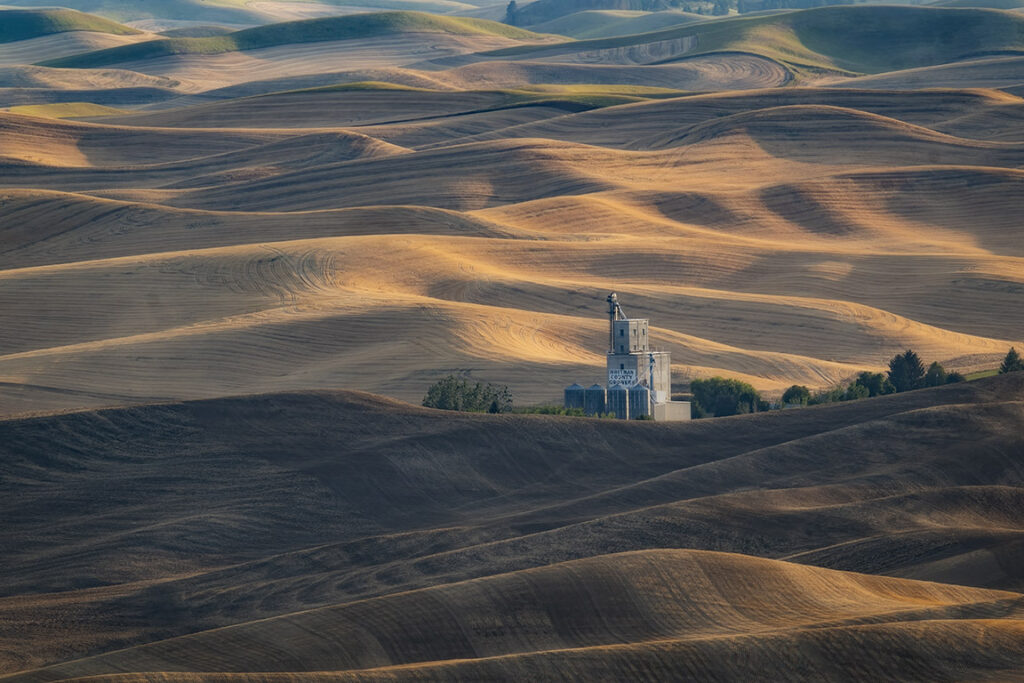
To get to this dramatic end state really didn’t take much post processing, but the results are very dramatic and it came out close to what I had visualized up on the butte. I used a combination of Dehaze, localized contrast, dodge & burn and vibrance to achieve the final image. The silo is the subject in the image, but the sunlight and shadows are the story in the image and through subtle processing I was able to bring to life the sunlight and shadows and the interplay across the hills.
Here is another quick example of being able to visualize your processing as your shooting to help come home with hopefully better images. This shot was taken at Cape Disappointment WA during a King Tide along the coast. Here is the un-processed image. Good shape of the wave but other wise flat and boring in my opinion.
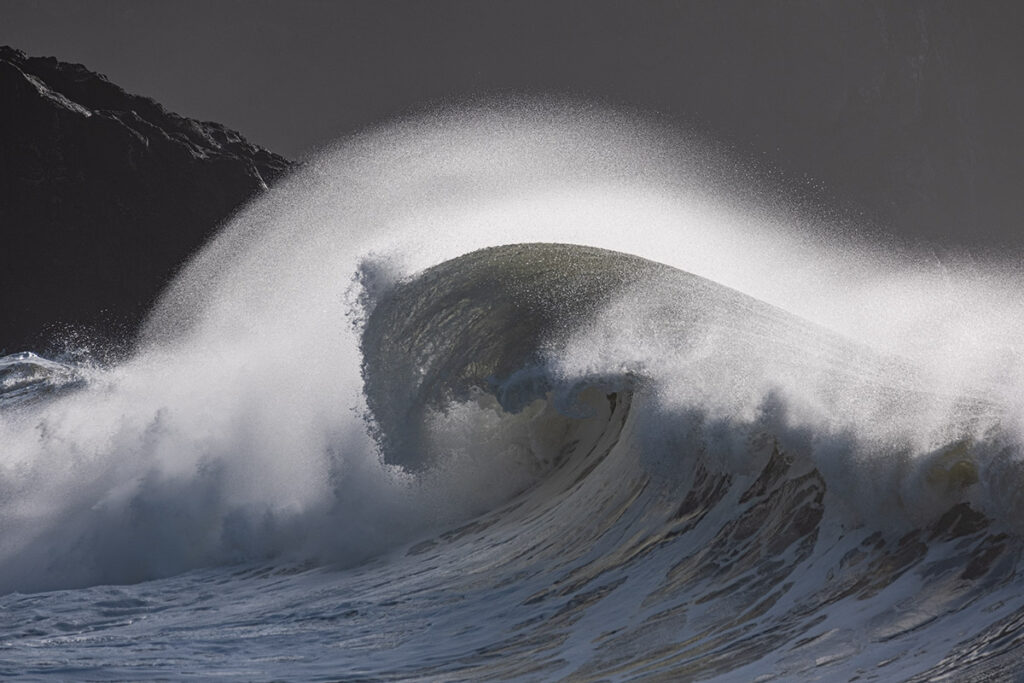
As I was on location and photographing the waves, I noticed the color present in the waves and made a mental note of it, which helped shaped how and when I captured the waves breaking. Knowing that I could bring out the color of the sand suspended in the water, which will bring a warmer tone to the image, I composed my shots with this end state in mind and how those warmer tones will play together in the final image. Visualizing my processing and what I wanted to do helped to shape, to an extent, how I composed and shot the image. Here is the processed image
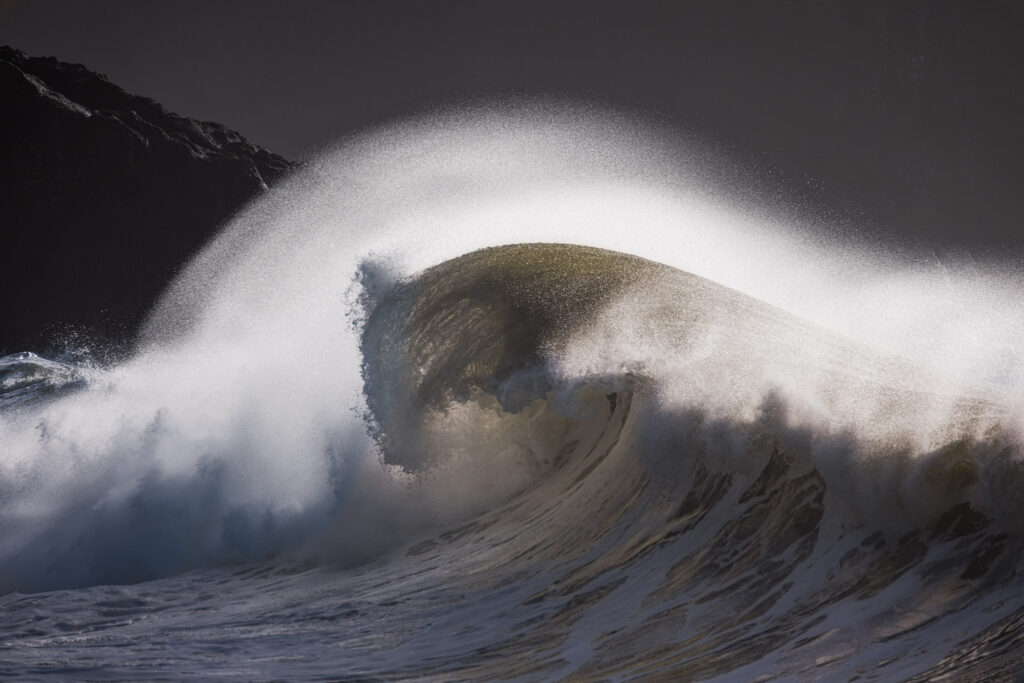
Nothing overly dramatic with the processing, but I did work to bring out the warmer tones on the backside of the wave and the face of the wave, as I felt those were important parts of the image. I shot and chose this image for processing based on it’s shape and potential, and that perceived potential helped me execute the shot in the field. If you can visualize your processing in the field, it can help to shape how you might compose your shot to tell your story in a way that is even more impactful for the viewer.
Alot of the talk about visualization in photography is often summed up as the ability to picture the essence of the final print in your mind before releasing the shutter…. Yep, I agree. There are many factors that go in to this visualization of the final print; composition, technical settings and how you are going to process the image once captured. If you can visualize your processing while in the field, this can help you in framing up the composition and executing it so that you can better achieve your overall visualization for the image.



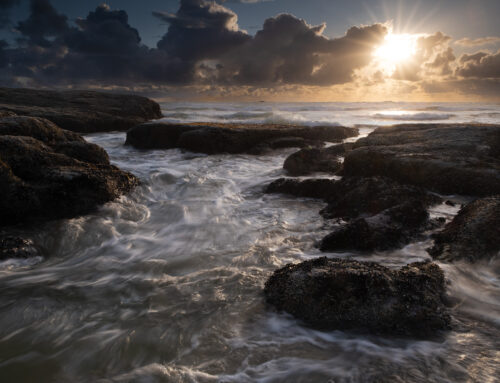
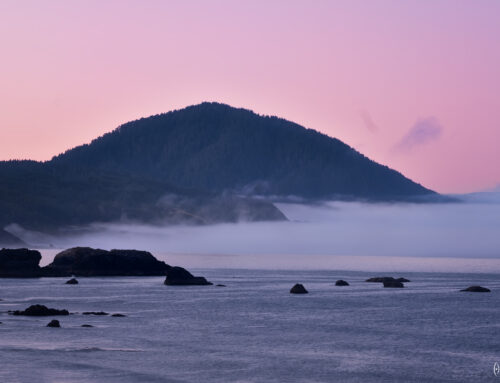
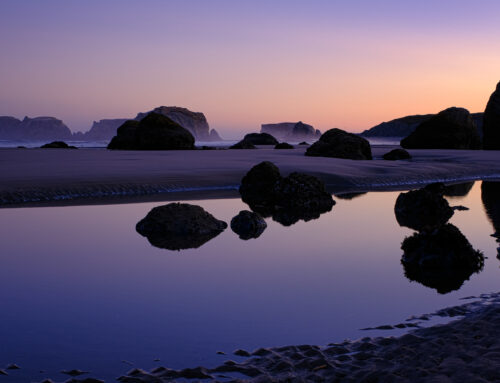
Leave A Comment